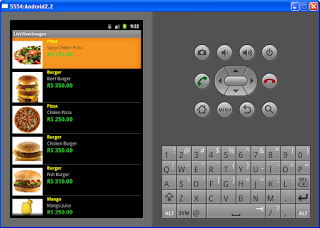
Android Custom ListView with Images and Text Example
Creating Project:
Make sure you have properly setup the Android SDK, AVD for Testing the Application. Create a New project in Eclipse IDE with the package as “hirparagroup.customlistview”. Create the Main Activity as “MainActivity”...





